Dacia Spring VS Suzuki Swace – Specs, Efficiency & Price Comparison
Which model is the better choice – the Dacia Spring or the Suzuki Swace? We compare performance (65 HP vs 140 HP), boot capacity (308 L vs 596 L), efficiency (13.20 kWh vs 4.50 L), and of course, the price (14500 £ vs 31900 £).
Find out now which car fits your needs better!
The Dacia Spring (SUV) is powered by a Electric engine and comes with a Automatic transmission. In comparison, the Suzuki Swace (Estate) features a Full Hybrid engine and a Automatic gearbox.
When it comes to boot capacity, the Dacia Spring offers 308 L, while the Suzuki Swace provides 596 L – depending on what matters most to you. If you’re looking for more power, you’ll need to decide whether the 65 HP of the Dacia Spring or the 140 HP of the Suzuki Swace suits your needs better.
There are also differences in efficiency: 13.20 kWh vs 4.50 L. In terms of price, the Dacia Spring starts at 14500 £, while the Suzuki Swace is available from 31900 £.
Compare all the key specs now and find out which model fits your lifestyle best!
Dacia Spring
The Dacia Spring stands out as an affordable and environmentally friendly option in the electric vehicle market, combining practicality with a compact design ideal for urban settings. Its minimalist interior, while basic, provides all the essential features needed for a comfortable drive, reflecting its cost-effective approach. The vehicle's performance suits city driving, making it an appealing choice for those seeking an entry-level electric car.
details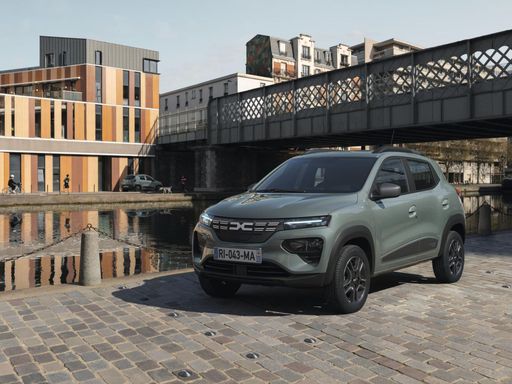 @ dacia-presse.de
@ dacia-presse.de
 @ dacia-presse.de
@ dacia-presse.de
 @ dacia-presse.de
@ dacia-presse.de
Suzuki Swace
The Suzuki Swace presents itself as a stylish hybrid estate car, combining practicality with eco-friendly credentials. Its sleek design is complemented by a comfortable and spacious interior, ideal for families and long journeys. The Swace's impressive fuel efficiency and advanced safety features make it a standout choice for those looking to merge economy with everyday usability.
details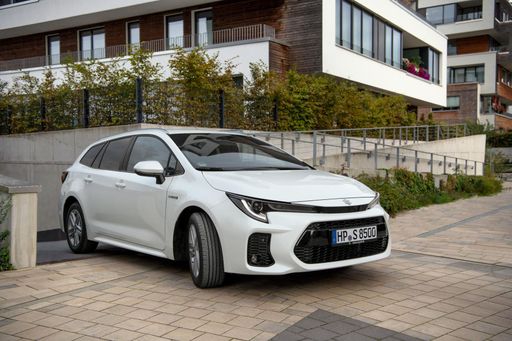 @ Suzuki
@ Suzuki
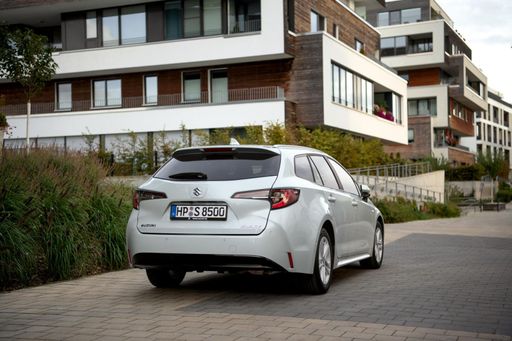 @ Suzuki
@ Suzuki
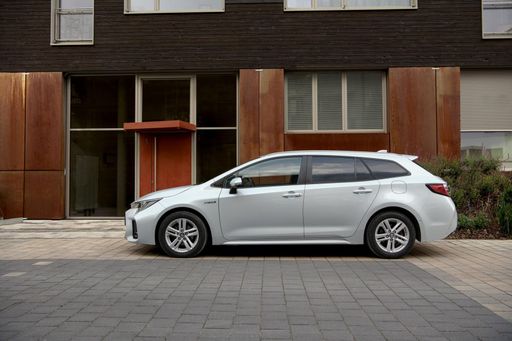 @ Suzuki
@ Suzuki
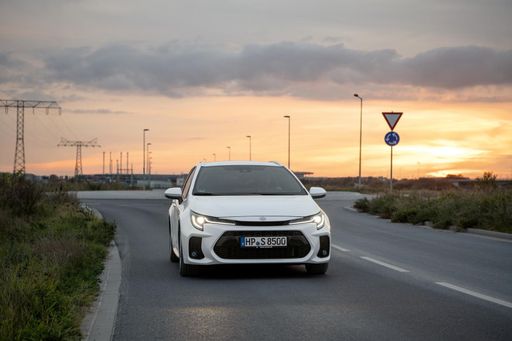 @ Suzuki
@ Suzuki
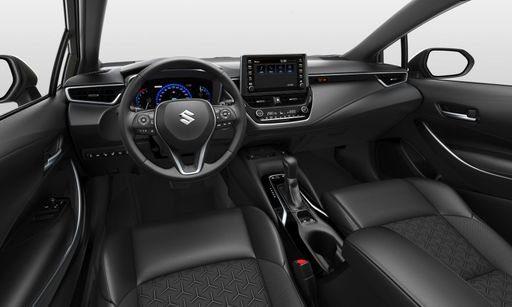 @ Suzuki
@ Suzuki

|

|
|
|
|
Costs and Consumption |
|
|---|---|
|
Price
14500 - 17100 £
|
Price
31900 £
|
|
Consumption L/100km
-
|
Consumption L/100km
4.50 L
|
|
Consumption kWh/100km
13.2 - 14.1 kWh
|
Consumption kWh/100km
-
|
|
Electric Range
225 - 228 km
|
Electric Range
-
|
|
Battery Capacity
26.80 kWh
|
Battery Capacity
-
|
|
co2
0 g/km
|
co2
102 g/km
|
|
Fuel tank capacity
-
|
Fuel tank capacity
43 L
|
Dimensions and Body |
|
|---|---|
|
Body Type
SUV
|
Body Type
Estate
|
|
Seats
4
|
Seats
5
|
|
Doors
5
|
Doors
5
|
|
Curb weight
1030 - 1050 kg
|
Curb weight
1475 kg
|
|
Trunk capacity
308 L
|
Trunk capacity
596 L
|
|
Length
3701 mm
|
Length
4655 mm
|
|
Width
1583 mm
|
Width
1790 mm
|
|
Height
1519 mm
|
Height
1460 mm
|
|
Payload
265 - 285 kg
|
Payload
360 kg
|
Engine and Performance |
|
|---|---|
|
Engine Type
Electric
|
Engine Type
Full Hybrid
|
|
Transmission
Automatic
|
Transmission
Automatic
|
|
Transmission Detail
Reduction Gearbox
|
Transmission Detail
CVT
|
|
Drive Type
Front-Wheel Drive
|
Drive Type
Front-Wheel Drive
|
|
Power HP
44 - 65 HP
|
Power HP
140 HP
|
|
Acceleration 0-100km/h
13.7 - 19.1 s
|
Acceleration 0-100km/h
9.40 s
|
|
Max Speed
125 km/h
|
Max Speed
180 km/h
|
|
Torque
113 - 125 Nm
|
Torque
-
|
|
Number of Cylinders
-
|
Number of Cylinders
4
|
|
Power kW
33 - 48 kW
|
Power kW
103 kW
|
|
Engine capacity
-
|
Engine capacity
1798 cm3
|
General |
|
|---|---|
|
Model Year
2024
|
Model Year
2024
|
|
CO2 Efficiency Class
A
|
CO2 Efficiency Class
C
|
|
Brand
Dacia
|
Brand
Suzuki
|
Dacia Spring
The Revolution of Affordable Electric Mobility: The Dacia Spring
The automotive world has witnessed remarkable advancements in electric vehicles (EVs), with the Dacia Spring emerging as a noteworthy contender in the affordable segment. Combining efficiency, affordability, and practicality, the Spring offers an intriguing prospect for eco-conscious individuals and city dwellers alike.
Powertrain and Performance: A Look Under the Hood
The Dacia Spring is equipped with an electric motor that delivers between 44 to 65 PS, translating into a versatile driving experience tailored to urban landscapes. It operates on a front-wheel-drive system, ensuring a familiar and manageable handling experience.
Dacia Spring's electric engine is paired with an automatic transmission, utilising a reduction gearbox. This setup allows for smooth acceleration and a top speed of 125 km/h, ensuring that everyday driving scenarios are handled with ease.
Efficiency and Range: Eco-Friendly without Compromise
Efficiency is a cornerstone of the Dacia Spring's design, boasting an energy consumption of just 13.2 to 14.1 kWh per 100 km. When fully charged, its 26.8 kWh battery offers a respectable range of 225 to 228 km, making it ideal for daily commutes and short trips.
Furthermore, the Spring takes pride in its commendable CO2-efficiency class A, emphasising its commitment to reducing environmental footprint with a zero-emission profile.
Design and Practicality: Compact yet Comprehensive
Lying in the SUV category, the Dacia Spring is compact with dimensions of 3701 mm in length and 1583 mm in width, making it a perfect match for urban environments where space is at a premium. Despite its modest size, it provides a generous boot space of 308 litres, ensuring practicality isn’t sacrificed.
Comfort and Interior: For the Everyday Journey
The Dacia Spring comfortably seats up to four passengers. The cabin offers a minimalist yet functional design, available in multiple trim lines including Essential, Expression, and Extreme, allowing customers to choose according to their taste and requirement.
With its ergonomic layout and simplicity, the interior is crafted to enhance the driving experience by focusing on essential needs, avoiding unnecessary distractions.
Affordability and Accessibility: Breaking Barrier
The Dacia Spring stands out in the electric vehicle market due to its affordability, with prices ranging from 16,900 to 19,900 €. This ensures that environmentally friendly transportation is accessible to a broader audience.
Additionally, the Spring allows for cost-effective maintenance and operational expenses, offering monthly running costs between 570 to 599 € and cost per km between 22.8 to 24 cents, making it an economical choice in the long run.
Final Thoughts: The Future of Urban Mobility
In summary, the Dacia Spring serves as a testament to how electric vehicles can be both affordable and practical, without compromising on essential features. Whether it is for the eco-conscious urbanite or those looking for a cost-effective daily driver, the Spring is positioned as a viable solution for navigating the future of urban mobility.
Suzuki Swace
Introducing the Suzuki Swace: A Hybrid Revolution
The Suzuki Swace, a remarkable addition to the hybrid market, promises a blend of efficiency and performance. Designed for those who appreciate sustainability without compromising on comfort, this estate car is set to redefine the hybrid experience.
Powertrain and Efficiency
At the heart of the Suzuki Swace lies a sophisticated full-hybrid system. With a 1.8-litre engine paired with an electric motor, the Swace delivers a combined power output of 140 PS (103 kW). This combination ensures optimal fuel efficiency, with a consumption rate of just 4.5 L/100 km, making it an economical choice for eco-conscious drivers.
Utilising a continuously variable transmission (CVT), the Swace seamlessly transitions between power sources. This system, alongside its front-wheel-drive configuration, guarantees a smooth and responsive driving experience. Drivers can also take comfort in the car's CO2-efficiency rating of Class C, with emissions as low as 102 g/km.
Sleek Design and Practical Features
The Suzuki Swace's design exemplifies understated elegance. Measuring 4,655 mm in length, 1,790 mm in width, and 1,460 mm in height, it boasts a spacious interior while maintaining an agile footprint suitable for urban environments.
With a generous boot capacity of 596 litres, the Swace is perfect for weekend getaways or the daily commute. The estate's ability to comfortably seat five occupants alongside its ample cargo space highlights its versatility.
Innovative Technology
The Swace comes equipped with a range of state-of-the-art technologies designed to enhance driver convenience and safety. Adaptive cruise control, lane tracing assist, and pre-collision systems are part of its standard suite, ensuring a secure journey every time.
The console's infotainment system integrates seamlessly with smartphones, offering connectivity features such as Apple CarPlay and Android Auto, ensuring you stay connected on the move.
Cost of Ownership
With an estimated monthly cost of €981, the Suzuki Swace is an attractive option for those seeking a cost-effective yet feature-rich hybrid vehicle. Its competitive pricing is complemented by economic benefits, such as lower fuel consumption and maintenance costs, solidifying its status as a wise investment.
Conclusion
The Suzuki Swace marks a significant step forward in the hybrid vehicle segment. Its blend of hybrid efficiency, innovative technology, and practical design makes it a perfect choice for modern consumers who value affordability, style, and sustainability.
The prices and data displayed are estimates based on German list prices and may vary by country. This information is not legally binding.
